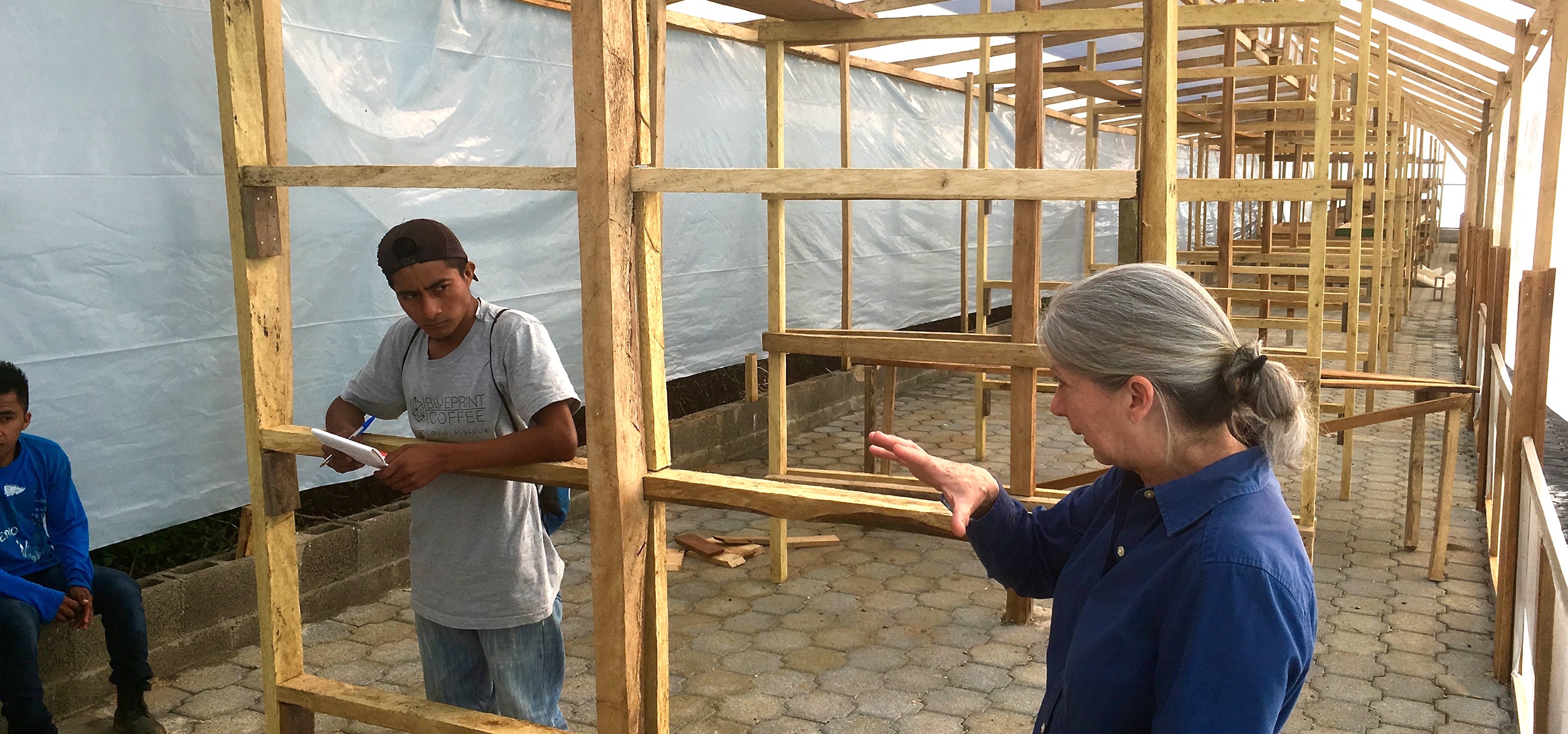Our partnership with Finca Esperanza in Guatemala and the Vizcaino Family is a constantly evolving collaboration. We have partnered with each other to find ways to support the pursuit of improved quality and consistency. In partnering with a farm and committing to their evolution, the challenges of consistent and high quality coffee are shared and not just a one way street. We have sought to address many aspects of the quality chain, to better understand the elements that affect quality. Upon commencement of our collaboration, the focus was to improve organic farming practices through better compost management and Actively Aerated Compost Tea application. Building soil and promoting plant health is an ongoing process that we continue to support. We started with soil health because that is the literal foundation of the farm. Plant health, fruit quality, yield, and the management of pests and disease are all linked to soil health. Soil health is only the beginning. As we continued to support their development, we followed with fermentation experiments to help them understand the elements that affect coffee fermentation and establish sound practices. This helped us better communicate the important factors that have an impact of overall quality, like ambient temperature and tank cleanliness during fermentation. This immediately led us into the drying process, which is the subject of our current collaboration.
When approaching a new project, the site concerns are reviewed in order to appreciate the need and impact of the project. Some of our concerns from past experiences were reliability, control, and management of drying process. Esperanza had arranged to use equipment at other local farms to assist with drying. This removed control of the drying phase to other producers that frequently have a very different approach and understanding of coffee processing. Some farms focus on efficiency or speed as the priority in drying. This approach tends to come from the necessity to speed up production due to the guardiola (drying machine) reaching capacity during harvest. Guardiolas can be very effective tools for drying high quality coffee and provide consistent results, but they are also expensive and require a source of fuel like parchment, wood, or gas to keep them working. Parchment is readily available if you have a drying mill, which Esperanza does not. Wood and fuel are also good if there is an sufficient supply. There are also ample sources of free energy that can be harnessed to dry coffee, like sun and air. When harnessing sun and wind, control is both the goal and the challenge. We do not control when the sun will shine, the ambient temperature outdoors, the velocity of the wind, or the moisture content of the air day to day. Raised-bed drying
houses are commonly used at coffee farms for drying, but leave more to be desired in terms of control. Farmers from around the world have been using clever ways for millennia to harness solar and wind power. This was the inspiration that motivated a conversation I was having with a Washington University architecture professor while meeting at Blueprint Coffee. Jonathan Stitleman, who was also instrumental in designing the interior of our new location on Watson, started to share with me architectural ideas that guided agricultural structures like grain mills and tobacco barns. With simple modifications, the design of the structures allowed farmers to dry corn, wheat or tobacco in hot and humid conditions. One technique used in the design was to create a chimney effect or stack effect. The stack effect uses the combined effects of the sun and wind to move air upward through a building. With this in mind, we proposed the design idea to Esperanza and began sketching the concept with Jonathan. After a few meetings we brought in Francisco Vizcaino, Ana’s son, to discuss the plans and initiate the construction.
The design of the drying house took into consideration the prevailing winds and path of the sun to get the greatest effect. Most drying houses are fairly open to the elements so they cannot move air and heat in or out when it is necessary. So this structure is mostly enclosed except window-vents at the roof that can be opened in the morning when sunlight begins to
warm the interior air causing it to rise. This movement pulls out remnant humidity and coolness from the previous night. As the house begins to warm up around 30-40 C, vents that are located at the base of the house can be opened. They are opened in proportion to the number of window-vents open at the roof. For the chimney effect to begin to kick-in at this point the window-vents need to be smaller than the area opened below. At this point we estimate by 50-75% more restricted. What is also happening in this process is a change in barometric pressure and ambient humidity. Mornings are very humid at Esperanza, so that is why the structure needs to be able to be completely enclosed. Interior humidity can be partially controlled, delaying an increase in humidity in the evening and accelerating humidity in the morning. Barometric pressure is helpful in anticipating increased humidity and weather changes that are relatively predicable at Esperanza as well. So, the structure ends up becoming an instrument to accelerate drying in humid conditions without the need for additional fuels. This is accomplished by using techniques that have been used for ages in agriculture around the world.
This year’s natural-processed and 32-hour CIMA yeast fermented coffees (available in the coming months) were all dried in this new structure. As this is an innovation for coffee, the first round is trial and error based on our current understanding of coffee drying. This year, a process of learning and improving efficiency will begin.

